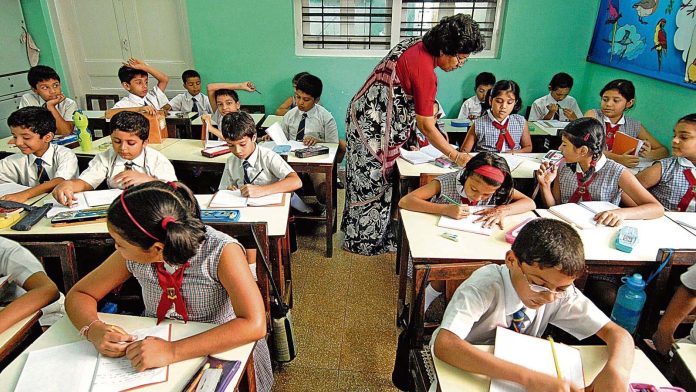Dr Parveen Singh
In the rich tapestry of India’s educational history, the old traditional system, epitomized by the revered Guru-Shishya Parampara, stands as a testament to holistic learning and mentorship. This South Asian tradition, deeply embedded in epics like the Ramayana and Mahabharata, symbolizes education extending beyond academics to include moral and ethical values. Examples like Guru Parshuram guiding Dronacharya and Bhishma Pitamah, and more recent figures like Ramakrishna Paramhansa and Swami Vivekananda, highlight the influential role of the Guru-Shishya Parampara in shaping spiritual leaders. Swami Vivekananda’s journey, seen in his spreading of his guru’s teachings and the iconic Chicago Address, demonstrates the potential of this tradition to instill pride in one’s culture and religion.
The trajectory of Indian education underwent a profound and grievous detour with the imposition of the British colonial-era system, an epochal shift that left an indelible mark on the nation’s educational landscape. At the center of this transformation was Thomas Babington Macaulay, a pivotal figure whose objectives and intentions, as revealed in his correspondence, were far from benign. Macaulay’s actions and policies were driven by a distinct agenda – to reshape the educational framework in a manner that would distance Indians from their native culture.
In examining Macaulay’s intentions, it becomes evident that his mission was not merely to introduce a new system of education but to uproot the deeply ingrained cultural roots of India. His famous Minute on Education in 1835, a document that crystallized his views on Indian education, laid bare his motivations. Macaulay, in his own words, expressed the need to create “a class of persons Indian in blood and color, but English in tastes, in opinions, in morals, and in intellect.” This nefarious intention aimed at creating a population that would be Indian in appearance but fundamentally Western in thought and values.
The implementation of Macaulay’s system had profound consequences. It marked a deliberate attempt to sever Indians from their ancestors’ legacy, which had been the bedrock of their cultural identity. The traditional systems of education, deeply rooted in ancient wisdom, moral values, and cultural practices, were pushed to the periphery. Macaulay’s system sought to displace the rich tapestry of Indian knowledge systems with a Eurocentric model that often dismissed or denigrated indigenous traditions.
This disconnection from traditional roots had multifaceted implications. It not only disrupted the continuity of India’s cultural heritage but also created a cultural vacuum that was subsequently filled by foreign ideologies. The deep reservoirs of knowledge present in ancient texts, philosophical treatises, and indigenous practices were overshadowed, if not obliterated, by the dominance of Western paradigms. In the eyes of Rabindranath Tagore, this imposition resembled a process of “spiritual drainage,” wherein the nation’s intellectual and cultural richness was systematically being drained away. Tagore passionately opposed the Western education system, aligning himself with the concerns raised, and advocated strongly for a rediscovery of Indic roots.
Despite the undeniable strength and efficacy of the old traditional system, its full-scale implementation faces hurdles due to the burgeoning population. The Guru-Shishya Parampara, emphasizing students residing at the teacher’s residence until their education is complete, encounters logistical constraints in India’s densely populated landscape.
The hope for revitalizing traditional teaching and medical systems lies in the present government’s potential to prioritize these systems, grounded in deep-rooted learning rather than shortcut approaches. India’s traditional knowledge systems, encompassing Vedic mathematics, Ayurveda, and Yoga, hold immense significance in preserving ancient wisdom and practices. Research in these areas becomes critical not only for heritage preservation but also for addressing contemporary challenges in healthcare, agriculture, and sustainability. Integrating these traditional practices into the regular education system requires careful consideration, addressing concerns related to applicability, standardization, and logistical challenges.
My numerous visits to China left me astonished at how they seamlessly integrate their traditional educational system, contributing to the nation’s rise as a global superpower. Their healthcare system, deeply rooted in traditional practices, still maintains strong bonds with ancient wisdom. Recognizing the need for a comprehensive approach, there is a call for the fusion of both traditional and modern systems.
This harmonious integration is perceived as a strategic and inclusive approach that celebrates India’s cultural heritage while equipping the younger generation to face the challenges of a globalized world. Prioritizing the strengths of the old traditional system, including Vedic mathematics, Ayurveda, and Yoga, alongside the advancements of modern education, envisions a future where the synthesis of old and new acts as a catalyst for the holistic development of individuals poised to excel on the international stage.
In conclusion, the fusion of traditional and modern education, carefully balanced and adapted to contemporary needs, represents a strategic and inclusive approach that celebrates India’s cultural heritage while preparing the younger generation for the challenges of a globalized world. This synthesis of old and new serves as a bridge between the wisdom of the past and the demands of the future, fostering not just education but a true renaissance. It envisions a future where the harmonious integration of traditional and modern learning methods ensures the cultural continuity.
(The author is Associate Professor, GDC Udhampur.)
Trending Now
E-Paper


